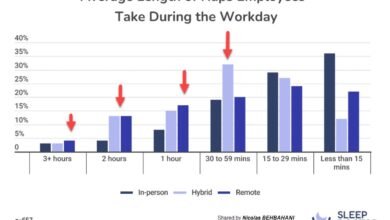
By | Jo Yurcaba | www.themuse.com
In some ways, video meetings are a lot like in-person meetings. You get together, say hello, and get down to business. Unfortunately, that also means that the same biases that exist in physical offices can carry over into video meetings. During in-person meetings, women and people of color are more likely to be interrupted, for example, and being on video doesn’t stop that.
Video meetings can also exacerbate the inequalities that exist in physical workplaces and even introduce new challenges. For example, you can’t read body language or facial expressions as easily, so it’s more difficult to tell if someone is uncomfortable or disagrees with you. In large video meetings, it can be extra hard to signal that you have something to say without interrupting someone, which could make it harder for women, people of color, LGBTQ folks, or introverts to be heard. During the pandemic, people are at home with their children and other family members, which can lead to other distractions or barriers to participating. And on top of all that, being on video calls is also more physically draining, which can make it even harder to feel like you have a chance to contribute.
The good news is that you can do something about these problems, whether you’re a meeting organizer or a participant. Here, experts share simple tips you can use to make your video meetings more inclusive and welcoming for all.
1. Send Out a Meeting Agenda Ahead of Time
If you’re organizing the meeting, send an email with an agenda as early as you can, says Karen Catlin, author of Better Allies, a book about creating more inclusive, engaging workplaces. Include what’s going to be covered and what’s required in terms of prep. This information will help introverts and others who might need time to prepare if they’re going to answer questions, contribute ideas, or present to colleagues.
2. Keep Everyone’s Situations in Mind When Scheduling Meetings
Many parents are trying to keep their kids on track with virtual learning while they work from home. Others might care for older or sick family members. That means they might have limited windows during the day when they can be available for meetings. If you’re a meeting organizer, you should try to account for these various situations when choosing a meeting time. Check in with your colleagues about the best blocks for meetings and avoid times when parents on your team might need to be more hands-on with kids, for example.
Staying flexible on the time may allow you to accommodate everybody, “as opposed to some people being left out because of other responsibilities they now have to take on given COVID-19,” says Beth Chandler, president and CEO of YW Boston, a nonprofit working with organizations to eliminate racism, empower women, and promote justice.
3. Normalize Distractions With Patience and Compassion
You can create a welcoming environment for people who are taking care of family at home, Chandler says. Often, people feel the need to apologize when a child, animal, or parent interrupts, she says. In that situation, any meeting participant can respond with, No need to apologize. X takes precedence. Another possible response is, I love having the opportunity to see X, Chandler says. If the situation seems pressing, she recommends saying, I see that X needs your attention. I’m happy to wait or we can reschedule for a time that’s more convenient.






